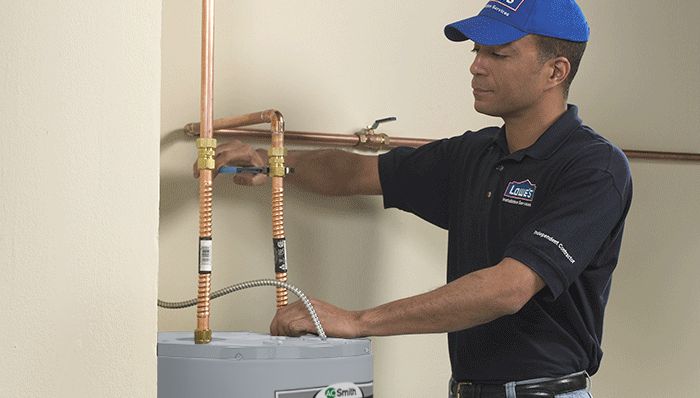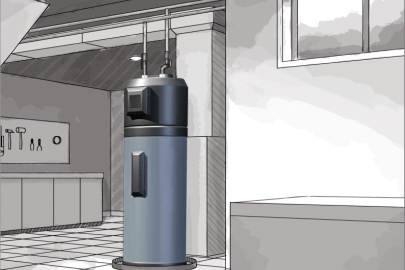What to Care for Your Home's Hot Water System Effectively
What to Care for Your Home's Hot Water System Effectively
Blog Article
Have you been trying to locate information and facts around Tips For Maintaining Your Hot Water Heater?

Hot water is necessary for daily convenience, whether it's for a refreshing shower or washing recipes. To ensure your warm water system runs effectively and lasts longer, regular maintenance is key. This write-up supplies practical ideas and understandings on exactly how to maintain your home's warm water system to prevent disruptions and pricey repairs.
Introduction
Maintaining your home's warm water system may appear difficult, but with a couple of easy steps, you can guarantee it operates efficiently for many years to find. This overview covers every little thing from understanding your warm water system to do it yourself maintenance tips and recognizing when to employ expert aid.
Significance of Maintaining Your Warm Water System
Routine maintenance not just prolongs the lifespan of your warm water system however also guarantees it runs efficiently. Neglecting upkeep can result in decreased effectiveness, higher power expenses, and even premature failure of the system.
Indicators Your Hot Water System Demands Upkeep
Knowing when your warm water system needs focus can stop major concerns. Look out for indicators such as inconsistent water temperature, odd noises from the heating system, or rusty water.
Comprehending Your Hot Water System
Prior to diving into upkeep tasks, it's practical to recognize the fundamental parts of your hot water system. Typically, this consists of the water heater itself, pipes, anode poles, and temperature controls.
Month-to-month Maintenance Tasks
Normal regular monthly checks can aid catch small issues prior to they escalate.
Flushing the Hot Water Heater
Flushing your hot water heater removes debris build-up, enhancing performance and prolonging its life.
Monitoring and Replacing Anode Rods
Anode rods protect against corrosion inside the storage tank. Inspecting and replacing them when broken is essential.
Checking and Adjusting Temperature Setups
Adjusting the temperature setups ensures ideal efficiency and safety.
DIY Tips for Upkeep
You can perform a number of upkeep jobs yourself to keep your warm water system in leading condition.
Checking for Leakages
Regularly inspect pipes and links for leakages, as these can lead to water damage and greater costs.
Testing Pressure Alleviation Valves
Examining the stress relief valve ensures it works correctly and stops too much stress buildup.
Protecting Pipes
Shielding warm water pipelines reduces heat loss and can save power.
When to Call a Specialist
While do it yourself upkeep is beneficial, some concerns require professional knowledge.
Complicated Concerns Calling For Specialist Aid
Instances consist of major leaks, electric troubles, or if your water heater is regularly underperforming.
Regular Specialist Maintenance Advantages
Expert upkeep can consist of thorough evaluations, tune-ups, and making sure conformity with safety and security standards.
Final thought
Routine upkeep of your home's warm water system is essential for efficiency, durability, and expense financial savings. By adhering to these suggestions and understanding when to look for professional aid, you can make certain a trusted supply of warm water without unanticipated interruptions.
How to Maintain an Instant Hot Water Heater
Before tinkering with your hot water heater, make sure that it’s not powered on. You also have to turn off the main circuit breaker and shut off the main gas line to prevent accidents. Also turn off the water valves connected to your unit to prevent water from flowing into and out of the appliance. 2. When you’re done, you have to detach the purge valves’ caps. These look like the letter “T†and are situated on either side of the water valves. Doing so will release any pressure that has accumulated inside the valves while at the same time avoid hot water from shooting out and burning your skin. 3. When the purge valves’ caps are removed, you have to connect your hosing lines to the valves. Your unit should have come with three hoses but if it didn’t, you can purchase these things from any hardware or home repair shops. You can also get them from retail stores that sell water heating systems. Read the user’s manual and follow it to complete this task properly. When the hosing lines are connected, open the purge port’s valves. 4. You should never use harsh chemical cleaners or solutions when cleaning your unit. Make use of white vinegar instead. It should be undiluted and you’ll probably use about 2 gallons. 5. Now flush your water heater. This task should probably take about 40 minutes. We can’t give you specific directions for this because the procedure is carried out depending on the type, model and brand of your heater. With that being said, refer to the user’s manual. 6. When you’re done draining the unit, you have to turn off the purge port valves again. Remove the hosing lines that you earlier installed on each of the water valves. Put the valve caps (purge port) back in their respective places and be very careful so as not to damage the rubber discs that are found inside these caps. 7. Now that everything’s back in place, check your user’s manual again to find out how to reactivate your water heating system. 8. Once it is working, turn one of your hot water faucets on just to let air pass through the heater’s water supply pipes. Leave the tap on until water flows smoothly out of it. https://www.orrplumbing.com/blog/2014/september/how-to-maintain-an-instant-hot-water-heater/

Hopefully you enjoyed our part about Water Heater Maintenance Tips You Can't Afford to Forget. Thanks a lot for taking time to browse our piece of content. Don't hesitate to pause to promote this blog entry if you enjoyed reading it. We value your readership.
Click Here To Find Out More Report this page